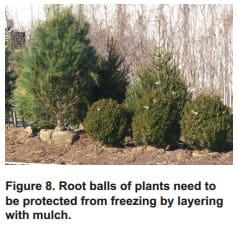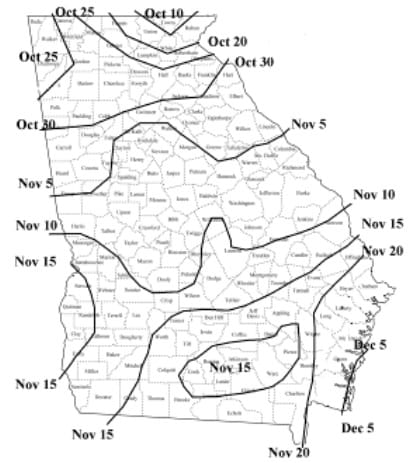A new publication from UGA and other southeastern universities equips nursery workers (and others) to protect container and dug plants from freezing temperatures. The publication explains winter acclimatization and how cultural practices (pruning, watering, fertilization, etc.) can impact cold hardiness. The publication also discusses the types of winter injury and methods to protect plants from winter temperatures.
Find the publication online here.
The following is a brief list of some of the Strategies and Techniques to Protect Plants
- Push pots together in large blocks.
- Wrap outside edge of plants with microfoam, spunbond nonwoven polyester material, or pine straw bales to protect from wind. No protection on inside containers.
- Mulch in and around plants on the inside of the block using:
i. Newspaper
ii. Pine straw, hay, or some other grain
iii. Leaves or other composted material - Cover blocks of plants with microfoam or spunbond nonwoven polyester fabric.
i. Cover fabric with white polyethylene.
ii. Use mulches under the fabric.
- Overwinter plants inside a quonset-style greenhouse or similar structure.
- Place single-layer white poly cover on house.
i. Push plants close together with no further protection.
ii. Cover plants inside structure with microfoam or spunbond nonwoven polyester.
iii. Heal plants in with mulch. - Place double-layer white poly cover on house with inflator fan to create an insulating dead-air space between plastic covers.
i. Also cover plants with microfoam or spunbond nonwoven polyester.
ii. Provide an independent heat source inside the house:- Portable forced-air heater that runs on fuel or electricity
- Permanent propane, electric, or wood-fired heater
- Place single-layer white poly cover on house.
Note: Organization of ideas based on Dunwell and McNeill, 2009.
